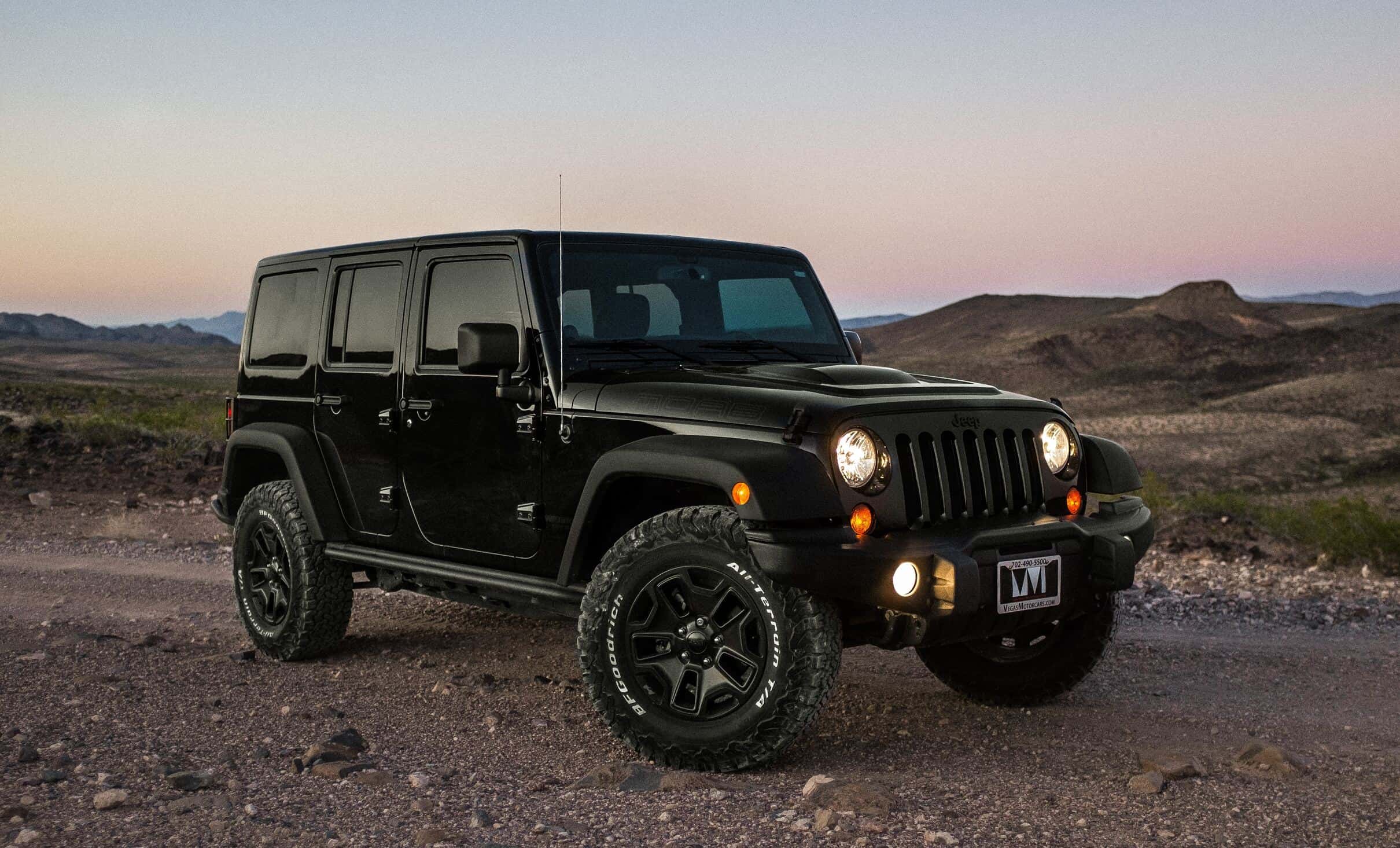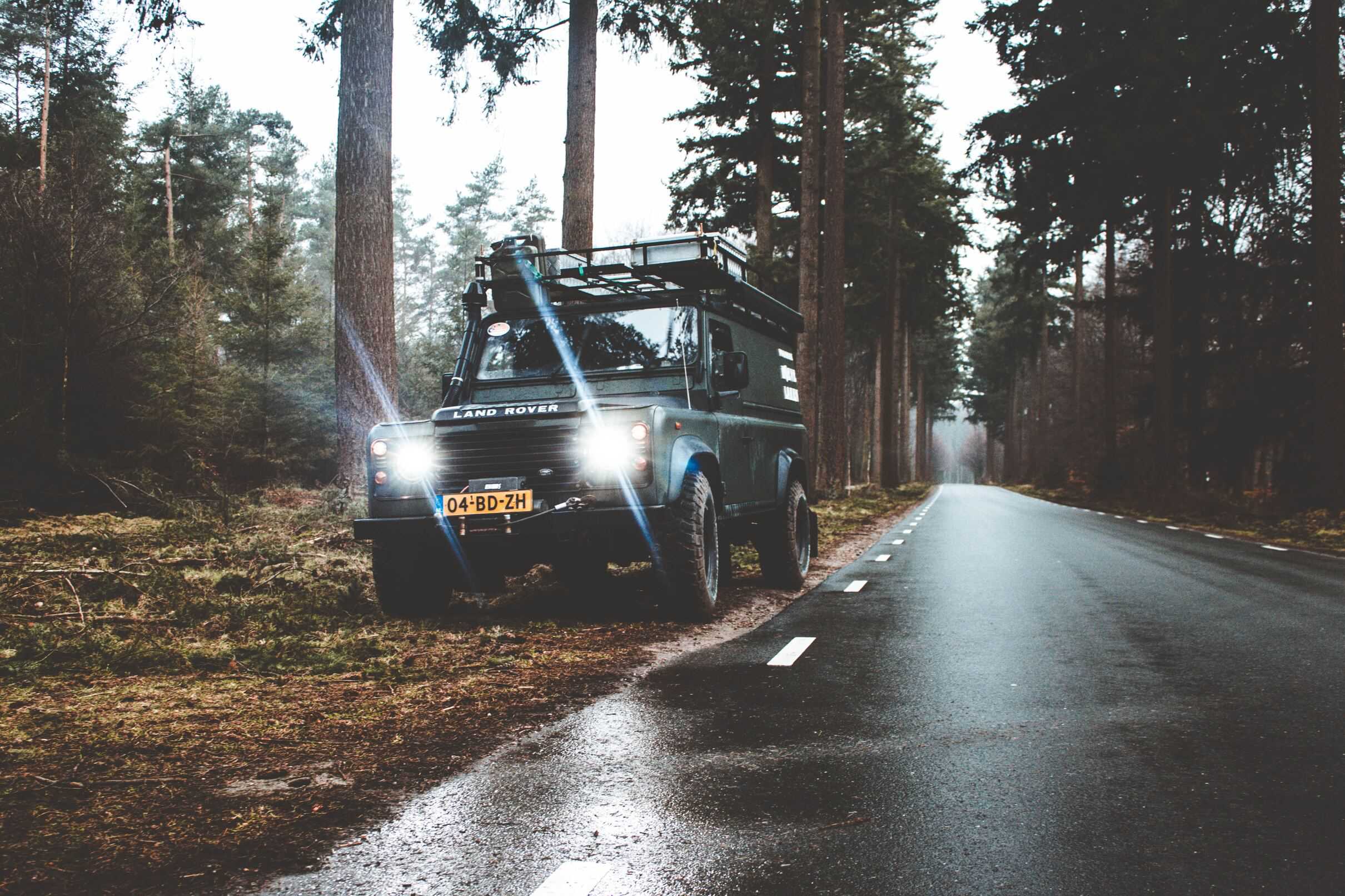Introduction
The automotive world has witnessed the departure of an icon with the discontinuation of the Land Rover Defender. For decades, the Defender held a special place in the hearts of enthusiasts, adventurers, and off-road aficionados. However, the void left by the Defender’s departure has been filled, in many respects, by the Jeep Wrangler. In this article, we will compare these two legendary off-roaders in terms of five key criteria: space inside the vehicle, speed, towing capacity, off-road capability, and fuel consumption. By the end, you’ll understand why the Jeep Wrangler is a worthy successor to the Land Rover Defender.

Space Inside the Vehicle
When it comes to interior space, the Land Rover Defender and the Jeep Wrangler offer distinct experiences.
The Land Rover Defender, known for its boxy design, provided ample interior space, with its utilitarian cabin layout. It had the advantage of a more extensive range of body styles, including two-door and four-door variants, as well as short and long-wheelbase options. This allowed for customisation to suit specific needs, from carrying passengers to carrying cargo.
On the other hand, the Jeep Wrangler also offers generous space, albeit in a more compact package compared to the Defender. Its interior design is rugged and practical, featuring materials that can withstand dirt, water, and rough handling. The Wrangler is primarily available in a four-door configuration, offering seating for up to five passengers, although there’s also a two-door variant for those who prioritise a shorter wheelbase. While the Wrangler’s cabin may not be as spacious as the Defender’s, it still provides sufficient room for passengers and cargo.
Ultimately, the choice between the two in terms of space comes down to personal preference and specific needs. If you require more seating configurations and space, the Land Rover Defender might have an edge. However, for those who prioritise a more compact design without sacrificing too much interior space, the Jeep Wrangler is a viable substitute.
Speed
Speed isn’t typically the first consideration when choosing an off-roader, but it’s still a relevant factor, especially if you plan to use your vehicle for both on and off-road driving.
The Land Rover Defender is available with various engine options, including both gasoline and diesel variants. While it’s not known for blistering acceleration, it offers sufficient power for highway driving and daily commuting. However, it’s worth noting that the Defender’s focus has always been more on off-road capability than on-road speed.
The Jeep Wrangler, on the other hand, offers better on-road performance, thanks in part to its lighter weight and more aerodynamic design. It’s available with a range of engines, including V6 and turbocharged four-cylinder options, offering a good balance between power and efficiency. The Wrangler’s on-road performance is respectable for a rugged off-roader, making it a more versatile choice if you need to use your vehicle as a daily driver.
Towing Capacity

When it comes to towing capacity, both the Land Rover Defender and the Jeep Wrangler are capable, but there are some differences to consider.
The Land Rover Defender, depending on the engine and configuration, has a towing capacity that ranges from around 3,500 to 8,201 pounds (1,587 to 3,720 kg). This makes it suitable for towing moderate to heavy loads, whether it’s a trailer, boat, or other equipment.
The Jeep Wrangler, while not as powerful as the Defender, still offers respectable towing capacity. Depending on the engine and configuration, the Wrangler can tow between 2,000 and 3,500 pounds (907 to 1,587 kg). While this may be less than the Defender’s maximum towing capacity, it’s still sufficient for towing smaller loads, including many recreational trailers.
Off-Road Capability
Off-road capability is where both the Land Rover Defender and the Jeep Wrangler truly shine. These vehicles are built to conquer challenging terrain, and they do so with distinctive features and engineering.
The Land Rover Defender boasts an advanced four-wheel-drive system, excellent ground clearance, and a rugged ladder frame construction. It’s equipped with terrain management systems that allow drivers to adjust settings for various off-road conditions, including mud, sand, rocks, and snow. The Defender’s suspension is also designed to articulate over uneven terrain, providing maximum traction.
The Jeep Wrangler, however, is renowned for its off-road prowess. It features solid axles, excellent approach and departure angles, and robust four-wheel-drive systems. The Wrangler’s Rubicon trim, in particular, comes with enhancements like locking differentials, sway bar disconnects, and rock rails, making it one of the most capable off-roaders straight from the factory.
Fuel Consumption
Fuel consumption is often a concern, especially for those planning long journeys or using their vehicles as daily drivers.
The Land Rover Defender, particularly with its diesel engine options, offers reasonable fuel efficiency for a vehicle of its size and capability. However, it’s important to note that the Defender’s fuel economy can vary significantly depending on the engine and driving conditions. In general, it tends to be more fuel-efficient on highways than in urban traffic.
The Jeep Wrangler, while not known for its exceptional fuel economy, provides competitive numbers given its off-road capabilities. The Wrangler’s fuel efficiency is influenced by factors such as engine choice, tire size, and driving habits. Opting for the turbocharged four-cylinder engine can improve fuel efficiency compared to the larger V6.
Conclusion
In conclusion, while the Land Rover Defender and the Jeep Wrangler have their unique characteristics and legacies, the Jeep Wrangler proves to be a worthy substitute for those mourning the Defender’s departure. It offers generous interior space, better on-road performance, respectable towing capacity, and impressive off-road capability. Additionally, the Wrangler tends to be more fuel-efficient in various driving conditions.
Ultimately, the choice between the two will depend on individual preferences and priorities. If you value a vehicle’s history and appreciate the Defender’s iconic status, you might opt for a used or restored model. However, if you’re in the market for a modern and capable off-roader with versatile on-road performance, the Jeep Wrangler is an excellent choice and a fitting successor to the Defender’s legacy.





